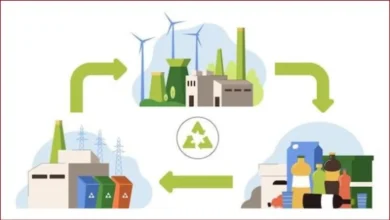Bridging Generational Divides: Modern Office Design for a Diverse Workforce

Generational gaps at workspace is the presence of individuals from various age groups in the workplace, each bringing their unique experiences, values, communication styles, and job preferences. Along with Traditionalists and Baby Boomers, other generations that have been impacted by the events, technologies, and cultural influences of their respective times are Generation X, Millennials, and Z.
Organisations must acknowledge and comprehend generational gaps at workspace in order to capitalise on the advantages of each age group. Understanding the unique characteristics and perspectives of several generations allows businesses to encourage employee collaboration, ignite creativity, and promote mutual learning. Organisations that embrace and promote these diversity see an increase in effective communication and teamwork, which lowers conflict and boosts overall performance.
How to Bridge the Generational Gaps at workspace?
Creating a culture at work that truly values and embraces generational diversity requires careful planning and a thorough approach. To bridge the generational gaps at workspace, it is important to use a variety of strategies to foster an atmosphere in which workers of all ages are motivated to collaborate. Provide an environment which seems to be innovative, and show respect for one another. Organisations can leverage the pooled wisdom and abilities of their multigenerational workforce by fostering an inclusive atmosphere that embraces generational diversity.
Inclusive Work Environment
Establishing a welcoming workplace is essential to promoting generational diversity success. Ensuring diversity in leadership roles, representing a range of age groups inside the organisation, is a critical component. An open discussion is yet another crucial element. Employees can freely share their experiences, difficulties, and suggestions regarding generational gaps at workspace by creating forums for open dialogue. These discussions foster empathy and understanding among coworkers of all age groups in addition to increasing awareness.
Creating Employee Resource Groups (ERGs) with a specific focus on generational gaps at workspace improves inclusivity even more. These organisations provide chances for networking, assistance, and cooperation on projects that honour the diversity of generations in the workplace. ERGs help create a more harmonious and cohesive work environment by promoting a sense of community and belonging.
Improving communication
Achieving effective communication involves employing diverse channels to accommodate individual preferences. By allowing people to utilise their preferred communication platforms, regardless of age, engagement and collaboration become more accessible. Additionally, implementing training programs tailored to enhance intergenerational communication skills proves beneficial. These initiatives delve into various strategies, nuances in tone, and linguistic aspects. By honing these skills and fostering collaboration with coworkers of different age groups, individuals can strengthen relationships and teamwork within the organisation.
Cross Generational Collaborations
It’s critical to have varied teams in order to encourage collaboration that capitalises on the distinct capabilities of every generation while building a strong feeling of oneness. In order to promote information sharing and the integration of diverse viewpoints, this entails purposefully combining people from different age groups.
It is critical to create varied teams and organise cooperative projects in a way that best utilises their differences. Giving team members duties requiring a variety of abilities and perspectives promotes collaboration, allowing them to pool their knowledge to approach problems from several perspectives. This not only improves the calibre of the results but also encourages respect and understanding among team members, creating a cohesive and welcoming work environment.
Flexibility
In today’s ever-evolving work environment, adaptability has emerged as a crucial factor valued by employees of all generations. Acknowledging this trend, it’s imperative for businesses to cater to the diverse preferences and requirements regarding work arrangements. A method to tackle this challenge involves providing remote work alternatives. Embracing remote work not only fosters autonomy and efficiency but also accommodates those who thrive in less conventional work settings.
Additionally, implementing reduced workweeks or flexible hours can help to further support a better work-life balance. This recognises the variety of lives and obligations someone may have outside of the workplace, such as personal hobbies or family obligations. Allowing employees to tailor their work schedules to their own demands increases their level of dedication and overall satisfaction.
Knowledge Sharing
Creating an atmosphere of perpetual learning and seamless knowledge exchange is essential for fostering growth within our organisation. To achieve this, we can implement various strategies. Firstly, establishing formal mentorship programs would be invaluable. Pairing seasoned employees with those eager to learn ensures a smooth transfer of knowledge and expertise across different generations of our workforce. Moreover, offering access to diverse learning platforms and resources is crucial. By providing avenues for online learning, we cater to the varied preferences and learning styles of our employees. Whether through structured training programs or self-paced modules, employees can enhance their skills and knowledge base at their own convenience.
Read also: How To Design A Conference Room For The Modern Office?
Conclusion
In order to promote cooperation, creativity, and understanding between workers of all ages, it is imperative that employers embrace generational gaps at workspace. Organisations can leverage the distinct capabilities of every generation by fostering an inclusive atmosphere, prioritising candid communication, and encouraging cross-generational teamwork. Adopting flexible work arrangements recognises the various demands and preferences of employees and includes remote work choices and flexible hours.
Furthermore, promoting information exchange via mentorship initiatives and a variety of educational resources encourages ongoing development and progress within the company. In essence, companies may establish a unified and vibrant work environment that benefits from the combined knowledge and experiences of their diverse staff by fostering understanding across age gaps. Also to avoid the clashes because of generational gaps at workspaces, you can opt for coworking spaces. Many such office spaces for rent in Hyderabad could be found easily.



